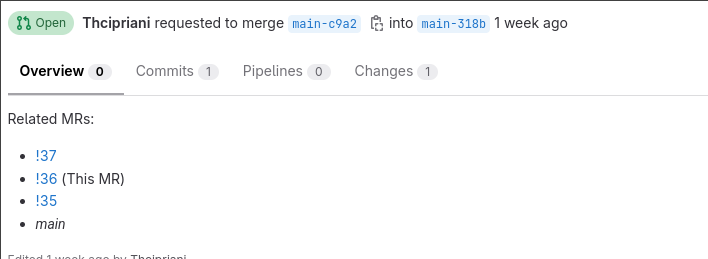Some people rely on stacked patchsets for their workflow. This is the default model of Gerrit. Is there are recommended path to use this in Gitlab? Let's investigate and publish findings here and somewhere under https://www.mediawiki.org/wiki/GitLab/Workflows
Projects to checkout:
